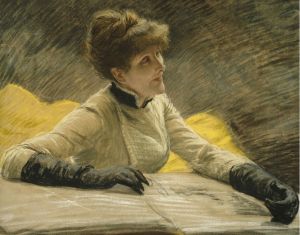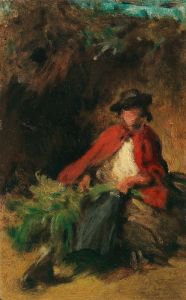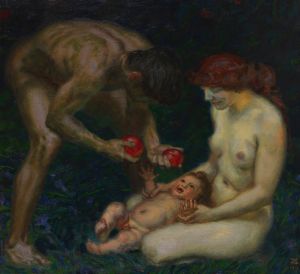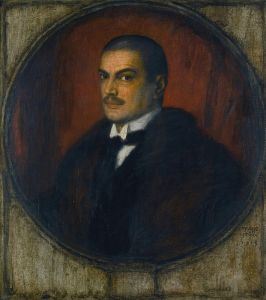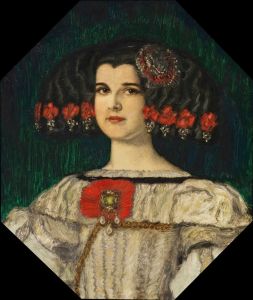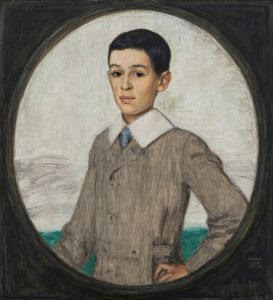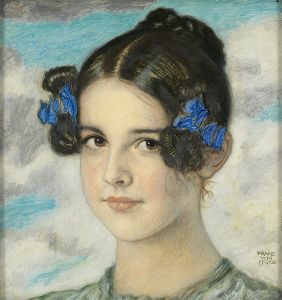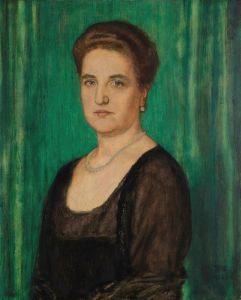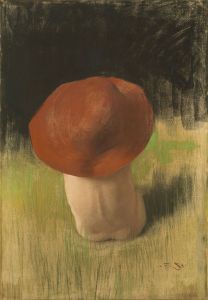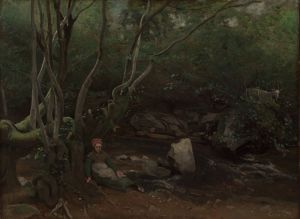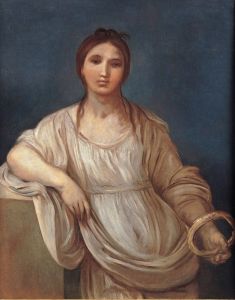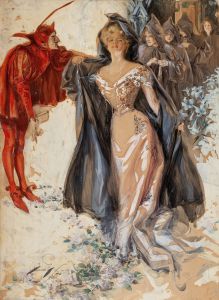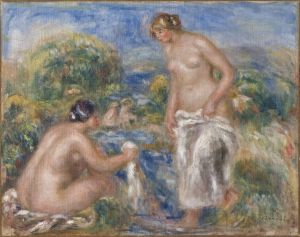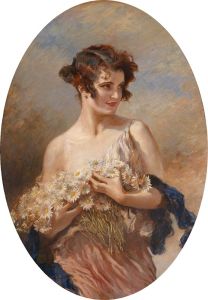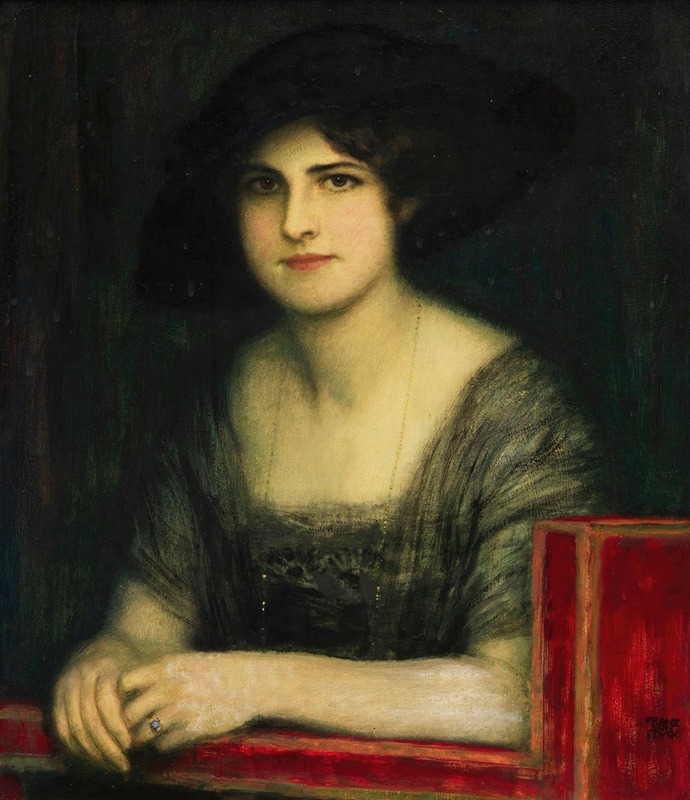
Bildnis der Tochter Mary
A hand-painted replica of Franz von Stuck’s masterpiece Bildnis der Tochter Mary, meticulously crafted by professional artists to capture the true essence of the original. Each piece is created with museum-quality canvas and rare mineral pigments, carefully painted by experienced artists with delicate brushstrokes and rich, layered colors to perfectly recreate the texture of the original artwork. Unlike machine-printed reproductions, this hand-painted version brings the painting to life, infused with the artist’s emotions and skill in every stroke. Whether for personal collection or home decoration, it instantly elevates the artistic atmosphere of any space.
Franz von Stuck was a prominent German painter, sculptor, and architect, known for his significant contributions to the Symbolist movement in the late 19th and early 20th centuries. One of his notable works is the painting "Bildnis der Tochter Mary" (Portrait of the Daughter Mary), which captures his daughter in a moment of serene contemplation. This painting is a testament to Stuck's skill in portraiture and his ability to convey the intimate and personal aspects of his subjects.
Franz von Stuck was born on February 23, 1863, in Tettenweis, Bavaria. He studied at the Munich Academy of Fine Arts, where he developed his distinctive style characterized by a blend of Symbolism and Art Nouveau. Stuck was a founding member of the Munich Secession, an art movement that sought to break away from traditional academic art and embrace more modern and innovative approaches.
"Bildnis der Tochter Mary" is an exquisite example of Stuck's portrait work. Painted in 1913, the artwork depicts Mary, Stuck's daughter, who was born in 1896. The painting is noted for its delicate rendering and the subtle interplay of light and shadow, which highlights the subject's features and imbues the portrait with a sense of depth and realism. Stuck's use of color and texture adds to the overall mood of the painting, creating an atmosphere that is both intimate and contemplative.
The composition of "Bildnis der Tochter Mary" reflects Stuck's mastery of form and his attention to detail. The portrait is characterized by its balanced composition and the harmonious arrangement of elements, which draw the viewer's attention to Mary's face. Her expression is calm and introspective, suggesting a moment of quiet reflection. Stuck's ability to capture the essence of his subject is evident in the lifelike quality of the portrait, which conveys both the physical likeness and the inner character of Mary.
Stuck's work often explored themes of mythology, allegory, and the human condition, but in "Bildnis der Tochter Mary," he turns his focus to the personal and familial. This painting is a departure from his more dramatic and mythological works, showcasing his versatility as an artist and his capacity to convey the subtleties of human emotion.
Throughout his career, Franz von Stuck received numerous accolades for his contributions to the art world. He was appointed a professor at the Munich Academy of Fine Arts in 1895 and was later ennobled by the Bavarian King Ludwig III, receiving the title "von" in recognition of his artistic achievements. Stuck's influence extended beyond his own work, as he played a significant role in shaping the careers of many young artists who studied under him.
"Bildnis der Tochter Mary" remains an important piece within Stuck's oeuvre, exemplifying his skill in portraiture and his ability to capture the essence of his subjects. The painting is a reflection of Stuck's personal life and his relationship with his daughter, offering a glimpse into the private world of one of Germany's most celebrated artists. Today, Stuck's works, including "Bildnis der Tochter Mary," continue to be admired for their technical excellence and emotional depth, securing his legacy as a master of Symbolist art.





